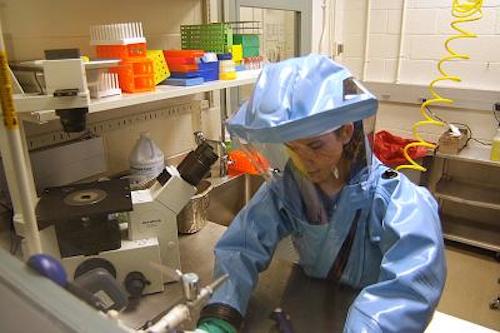 Evolution
Evolution
Evolution and the Ebola Virus: Pacing a Small Cage

I received a request to comment on the evolution of the Ebola virus. The best, most recent work, which sequenced and compared 99 entire virus genomes, was published in Science last month: "Genomic surveillance elucidates Ebola virus origin and transmission during the 2014 outbreak." It came at a very high cost — five co-authors actually died of Ebola in the course of the work.
The paper is mostly concerned with tracing the timing and spread of the virus. The authors show that the virus is acquiring mutations very rapidly (several hundred compared to a virus from an earlier outbreak in 1976), as is to be expected for RNA viruses, which have a much higher mutation rate than DNA viruses. None of the mutations was evaluated for functionality/selective value (which would be quite a job to do….), but all seem to be point mutations — no gene duplications or anything fancy. In fact, the larger virus family of which Ebola is a part, the filoviruses, seems to be pretty much unchanged in its basic genomic structure and organization over the past ten thousand years.
The high rate of mutation of Ebola is similar to what John Sanford has demonstrated for the H1N1 virus that caused the influenza pandemic after World War I. He makes a compelling case that the accumulating mutations there were degradatory could not be eliminated easily by selection, and eventually caused the virus’s extinction in 2009.
Even small mutations in Ebola could have important epidemiological and medical effects if, for example, they affect the virus’s ability to bind to various cell receptor proteins. Yet, despite furious mutation, there’s no evidence that much of anything is changing at the basic gene or biochemical level for the Ebola virus in particular or the filoviruses in general. It seems to be another instance of what one group evocatively described as RNA viruses "pacing a small cage" — dangerous, but confined within definite limits.
Image source: Wikipedia.
